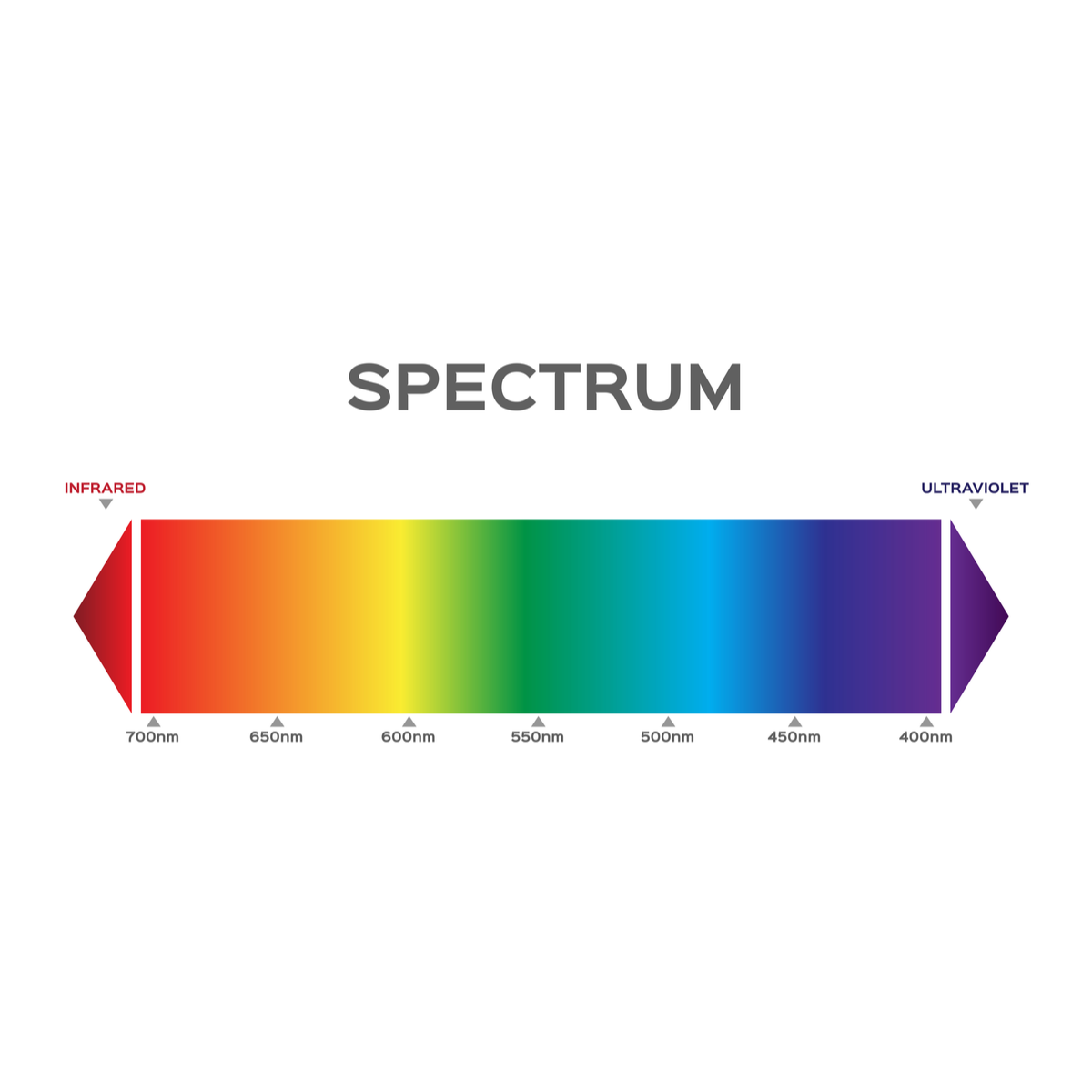
If you’ll allow me to nerd out for a minute, I want to talk about light. More specifically, the invisible spectrum of light. If you’ve read other blogs, you may realize I’m fascinated with light therapy. However, it feels like one of those things that’s too good to be true. Does it really work? I feel like it does and I feel like I see results with infrared and blue light, but my brain would like a little more empirical data.
Have you ever been to a dermatologist’s office and had one of the photographs taken that shows you the sun damage you have below the skin? I have not, but I’ve seen photos and frankly they are a bit terrifying! I am very fair skinned and have had visible freckles for as long as I can remember. About four years ago, I developed melasma (probably hormone-related – my “wisdom” is seeping out and showing in my melanin). In a nutshell, it’s discolored skin on the face related to hormones, genetics, sun exposure. I look “patchy” which is not a term anyone wants to use about their face. While there are treatments for it, as I understand it, you cannot actually get rid of it. You can minimize triggers (sun exposure) and you can treat it to keep it lightened.
Light therapy has emerged as a promising means to address these discolorations in skin – specifically GREEN light. I’ve googled a lot and found it promising. Though I’m interested in trying out at home options (for cost and convenience), this is a great resource with scientific papers if you want to do a deep dive.
To satiate my curiosity, I started wondering how I could measure changes in discoloration and sun damage from products and devices. Come to find out, UV measuring cameras used in dermatologists offices are expensive. I mean REALLY expensive. I guess there’s a reason we don’t all have one!
Traditional cameras filter out UV light to help produce a crisp and clear image. However, it is possible to alter a traditional camera to capture UV light basically by UNDOING and REFILTERING the light captured by the camera. So…that’s what we did.
I have to give a huge shout out to Mobtown George for assisting me in this endeavor because frankly it’s far beyond what I understand as a non-photographer. George is a professional photographer with over 30 years of experience, so he’s the perfect compliment to my obsession.
What Are the Steps?
- Find a company that performs the modifications. There are a number of companies that do, but it’s specialized. I picked Spencer’s Camera who do this to support astral photography. They do a range of modifications but we opted for a full spectrum conversion. Essentially this means that they remove the filters IN the camera which allows the user to control what light is captured with filters over the lens. The rub is, you have to find the right camera to “mod”.
- Find the right camera. Different cameras handle light filtering differently and better/worse. It’s important to find one that handles it in a way that is optimal for being “undone”. Based on the recommended list from Spencer’s Camera (there are a lot of different cameras suitable to this mod), supported by extensively googling input from other photographers, we settled on a Sony A7R because George already shoots Sony. The good news is that it isn’t a brand new camera. The bad news is, it took us a while to find one at the price point we wanted…knowing that we had additional money to invest to mod it.
- Get the right lens. Much like the camera, lens also filter and focus light. Finding a lens that will allow the range of light in is critical. We are still testing this out and probably haven’t quite hit on the perfect blend – but we started with a fairly inexpensive lens.
- Get the right filter(s). This is a critical piece. Once you get rid of the filtering in the camera and you minimize the filtering from the lens, you have to add a “lens filter” to restrict the incoming light to the range you want (normal, infrared, UV). Most filters filter out a specific wavelength of the light spectrum. In order to isolate the UV spectrum (between 300nm – 400nm) (nm=nanometers) you would typically need 2-3 filters combined. This greatly reduces the usability of the camera. We opted for a space telescope specific filter which only allows 300nm – 400nm light through and eliminates everything else. It cost almost as much as the modification or camera! It will be handled with kid gloves to make sure it doesn’t get scratched or break!
This has been a saga, an adventure and certainly not an inexpensive one! But, I do this to satisfy my own curiosity and hopefully yours as well. Stay tuned…you’ll be seeing UV photography and beauty coming your way soon!
To save YOU from having to invest and navigate the tricky world of IR and UV imagery, if you have burning questions or niggling curiosities, let us know.